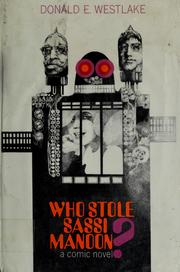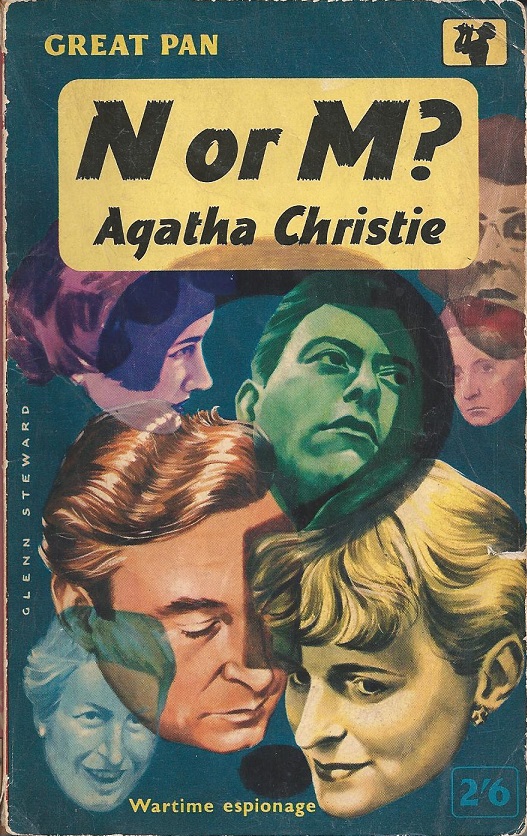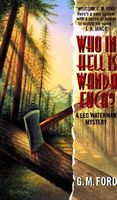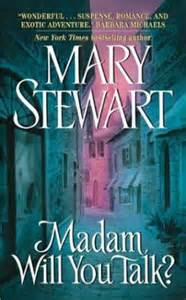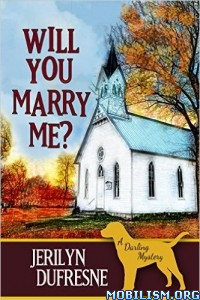2013-2014
 October 20, 2013 - Richard Benda was found dead from a shotgun wound to the stomach in a field in October. The SD Attorney General, Marty Jackley, instantly ruled it a suicide. Came out shortly thereafter that Benda had, apparently, embezzled pots of money from the EB-5 program, an immigration program set up by George H.W. Bush in 1990 that grants Visas to foreign investors for a minimum $500,000.00 investment. Quick money for the state, quick green card, and everything's hunky-dory.
October 20, 2013 - Richard Benda was found dead from a shotgun wound to the stomach in a field in October. The SD Attorney General, Marty Jackley, instantly ruled it a suicide. Came out shortly thereafter that Benda had, apparently, embezzled pots of money from the EB-5 program, an immigration program set up by George H.W. Bush in 1990 that grants Visas to foreign investors for a minimum $500,000.00 investment. Quick money for the state, quick green card, and everything's hunky-dory.  Now Richard Benda was the former commissioner of then Governor Mike Rounds' Office of Economic Development. (Rounds is currently one of our two State Senators, the other being John Thune.) He was also the one-time financial monitor of the Northern Beef Packers of Aberdeen, a $100 million slaughterhouse, funded largely by Asian EB-5 investors, which later was auctioned off in December, 2013 for $4.8 million in cash and $39.5 million in the cancellation of what's been called a “somewhat murky debt." Benda was soon accused of stealing $500,000 and "amending" grant proposals to give Northern Beef Packers more money. AG Jackley has refused to release the autopsy of Mr. Benda ("out of respect for the family"); and in July of 2014, after 9 months of increasing stink, Jackley waved a document in front of news cameras that he claimed were the indictments for Aggravated Theft and Aggravated Grand Theft by Deception that were about to be served on Benda right before he killed himself/was murdered. (Take your pick; we all have.)
Now Richard Benda was the former commissioner of then Governor Mike Rounds' Office of Economic Development. (Rounds is currently one of our two State Senators, the other being John Thune.) He was also the one-time financial monitor of the Northern Beef Packers of Aberdeen, a $100 million slaughterhouse, funded largely by Asian EB-5 investors, which later was auctioned off in December, 2013 for $4.8 million in cash and $39.5 million in the cancellation of what's been called a “somewhat murky debt." Benda was soon accused of stealing $500,000 and "amending" grant proposals to give Northern Beef Packers more money. AG Jackley has refused to release the autopsy of Mr. Benda ("out of respect for the family"); and in July of 2014, after 9 months of increasing stink, Jackley waved a document in front of news cameras that he claimed were the indictments for Aggravated Theft and Aggravated Grand Theft by Deception that were about to be served on Benda right before he killed himself/was murdered. (Take your pick; we all have.)Like any good crime fiction writer, I looked at the documents and recognized the simple fact that, without a signature or notarization, these documents could have been typed up at any time, say the weekend before the Monday July news conference, when the crap was piling too deep to ignore any more. And, as more and more people demanded answers, the SD legislative committee declared in December of 2014 that Richard Benda was solely responsible for the $500,000 embezzlement and probably the loss of millions of dollars (last report, $140 million, but who's counting), but no one knows where that money went, and they were not going to investigate further. They were especially not going to investigate a man named Joop Bollen, a Dutch foreign national who ran the EB-5 program for Governor Rounds and later set up his own private corporation, SDRC, which took over administration of the EB-5 program. Mr. Bollen was asked some questions by the SD legislative committee, but was allowed to answer them in writing, and never had to appear. He has never been charged with anything. Anything at all...
But wait, there's more! I've been on vacation, and while I was gone, the Feds, yes, the Feds! have decided that South Dakota is too corrupt to use EB-5 funds, and we are barred, yes, BARRED, from every getting EB-5 money again. Plus, they're suing South Dakota:
http://dakotafreepress.com/2015/10/18/feds-say-south-dakota-too-corrupt-to-use-eb-5/
http://www.mitchellrepublic.com/news/state/3863619-feds-aim-kick-sd-out-eb-5-program-state-sues-bollens-records
And, at last, the State of South Dakota is going to sue Mr. Bollen. Like there's any money left...
Meanwhile, there's a whole new bit of nasty coming out from under the rocks:
2015
Late at night on September 17, 2015, a fire destroyed the home of Scott and Nicole Westerhuis and their four children in Platte, South Dakota. It wasn't until a few days later that it turned out that all six had been shot to death. SD Attorney General Marty Jackley declared it a murder/suicide/arson, perpetrated by Scott Westerhuis. The only question was why. Now, I'm writing this in early October, and this is only going to get messier.
Scott Westerhuis was the business manager of MCEC, the Mid Central Educational Cooperative, which is, among other things, a hub for distributing federal grand monies to other non-profit organizations. One of these was South Dakota Gear Up, whose website was taken down after all the employees were fired... Well, here's the deal, Gear Up received a $4.3 million dollar contract to help get Native American kids into college. On September 16, 2015, Department of Education terminated the contract after an audit declared bad reporting, bad accounting, and general bad books. On September 17, the Westerhuis family tragedy occurred. On September 25, State Education Secretary Melody Schopp fired every surviving employee of Gear Up, and shut down the Gear Up website.
 |
| 36705 279th Street, Platte, SD. screen cap from Google Maps, 2015.09.22. |
But wait, there's more! The Westerhuis family lived on a $1.3 million rural Platte property that included a 7,600 square foot house, a $900,000 gym complete with basketball court, weight-lifting area, and computers, and a loft with a meeting room, rooms for guests, and a kitchen. This was on an official combined MCEC salary of $130,549.82.
But wait, there's more! Scott Westerhuis set up as many as 7 non-profit corporations related to Indian education:

Some are inactive, but Rock Ranch Consulting, which has no easily identifiable online presence, may refer to the Westerhuises’ rock-decorated rural home, torched on September 17. Rock Ranch Consulting was the source of incorporation funds for “American Indian Institute For Innovation and Excellance,” [sic], whose 2014 Form 990 shows $2.7 million in revenue and $3.0 million in expenses, including $1.58 million in salaries and wages, $311K in pension and benefits, and $270K in travel, conferences, and meetings. Apparently very little education of Native Americans actually happened. And there's Oceti Sakowin Education Consortium (OSEC), formed in 2011 and still in good standing, whose 2013 Form 990, completed by Nicole Westerhuis on November 6, 2014, shows $965K in revenue and $935K in expenses. Scott Westerhuis was incorporator of all of these, and his wife Nicole was business manager of at least some of them.
(Thanks to Corey Allen Heidelberger for his incomparable fact-finding on Dakota Free Press: http://dakotafreepress.com/tag/mid-central-educational-cooperative/ )
But wait, there's more! We are just now cracking (again, thanks, Corey!) the list of high-level education professionals who received significant monthly and annual payments ($150,000+ in some cases) for consulting and administration from Gear Up and/or MCEC, and are scrambling to cover their assets, er, what they did and when and why. My two favorites:
- Dr. Joseph Graves, Mitchell, SD School Superintendent, received his money from the MCEC for the Teaching American History federal grant; what makes this especially sweet is that the South Dakota Board of Education has made teaching early American history optional in South Dakota.
- Dr. Rick Melmer, the Dean of Education of the University of South Dakota, who simply couldn't remember nine $1,000 in payments live on South Dakota television: http://www.keloland.com/newsdetail.cfm/melmer-answers-questions-about-gear-up-work/?id=185508 You really can't make this stuff up. (I don't know about you but I've never forgotten a single thousand dollar check I've ever gotten in my life, much less nine of them...)
 |
| Governor Dugaard |
Now I could go on into a tirade about South Dakota mismanagement of federal grant monies, i.e., the political cronies slurping on the federal gravy train. (Meanwhile our distinguished Governor Dugaard refuses to expand Medicaid coverage because the feds might not have the money: note to Gov - if so, it's because your pals have siphoned it all off to build large gyms.) Or I could discuss the shameful use of Native Americans to get grant monies. I have, I will, and I will again.
I will go off, for a moment, again, on the fact that South Dakota has been ranked #2 for government corruption. (New Jersey, eat your heart out!) How can this be? Simple: South Dakota is a one-party state: the Governor is Republican, the GOP has a super-majority in the legislature, the districts are gerrymandered so that Republicans consistently keep their super-majority (this is especially farcical when you see the little corridor linking the entire Rosebud Reservation, votes 90% Democratic, to staunch Republican Pennington County, a/k/a Rapid City). It helps that Pierre, our capital, is one of the few US state capitals which is not on a major interstate - it's literally out in the middle of nowhere - and there is no major news media located there. This helps ensure that whatever happens in Pierre, stays in Pierre.
Until someone dies. And the death toll is starting to rise.
Meanwhile, why does hell always break loose in autumn?
I will go off, for a moment, again, on the fact that South Dakota has been ranked #2 for government corruption. (New Jersey, eat your heart out!) How can this be? Simple: South Dakota is a one-party state: the Governor is Republican, the GOP has a super-majority in the legislature, the districts are gerrymandered so that Republicans consistently keep their super-majority (this is especially farcical when you see the little corridor linking the entire Rosebud Reservation, votes 90% Democratic, to staunch Republican Pennington County, a/k/a Rapid City). It helps that Pierre, our capital, is one of the few US state capitals which is not on a major interstate - it's literally out in the middle of nowhere - and there is no major news media located there. This helps ensure that whatever happens in Pierre, stays in Pierre.
Until someone dies. And the death toll is starting to rise.
Meanwhile, why does hell always break loose in autumn?
I'll keep you posted.






















